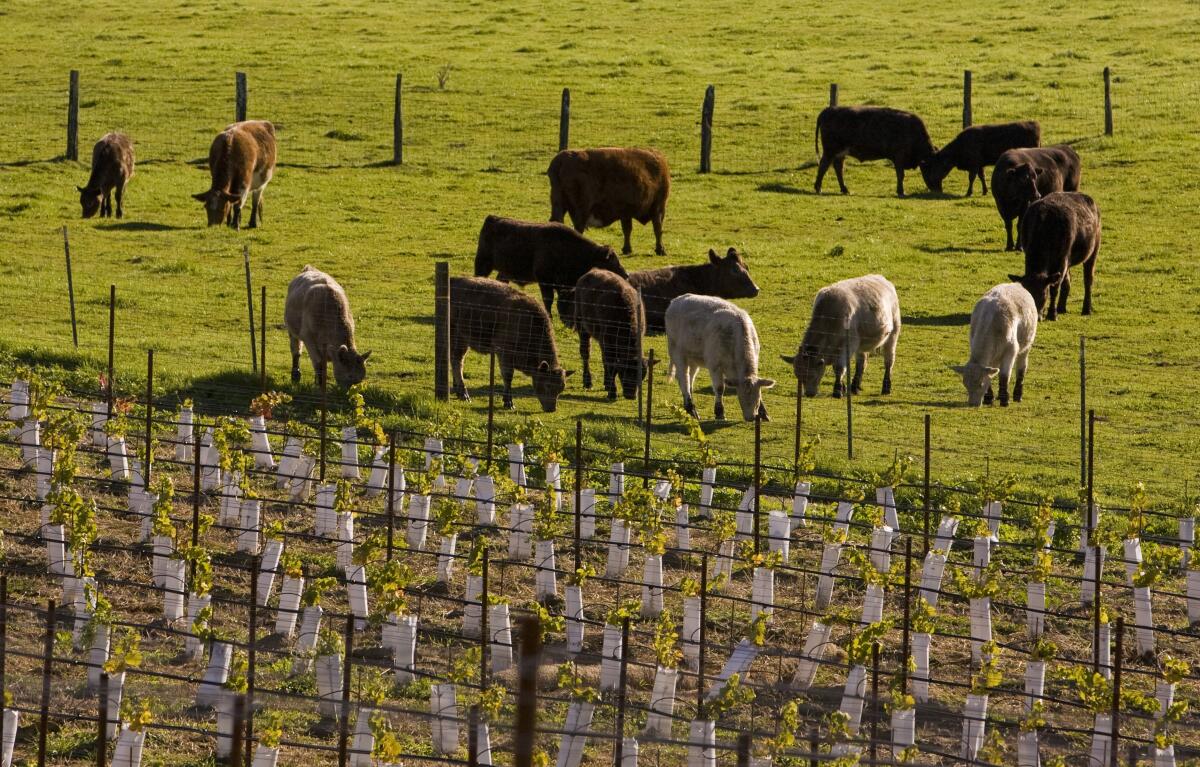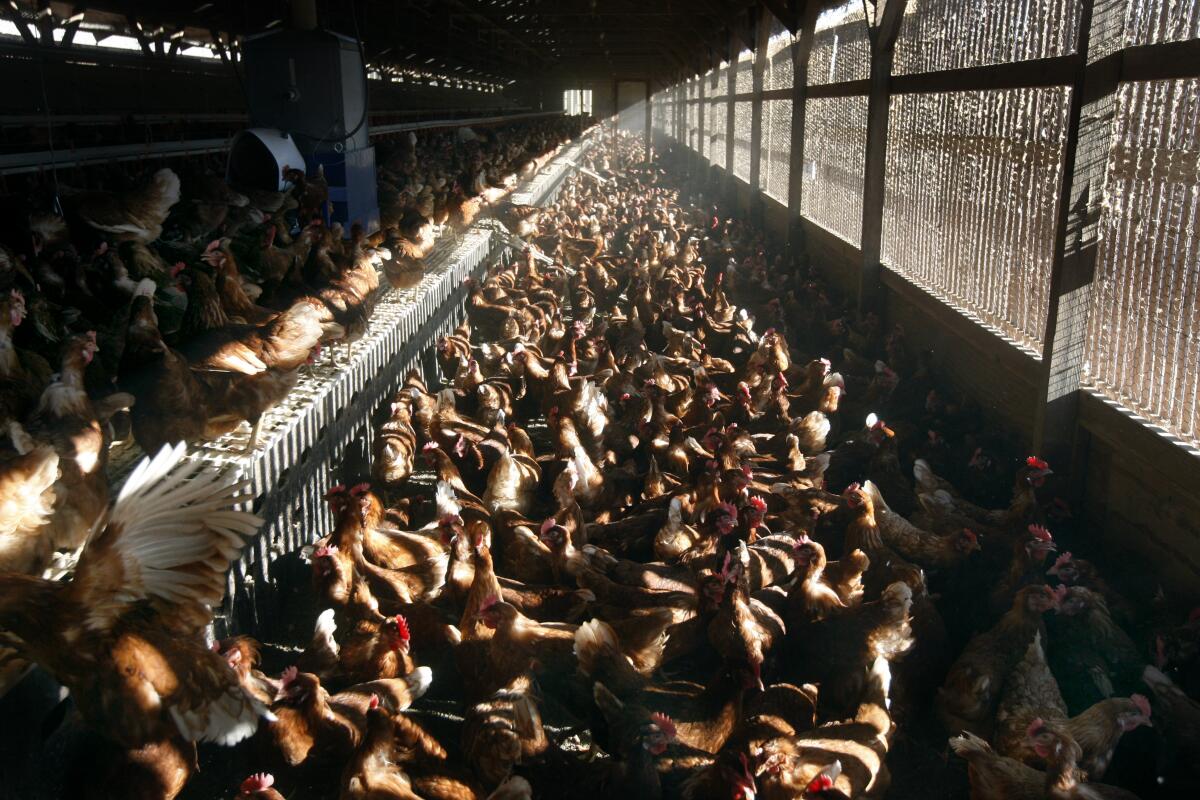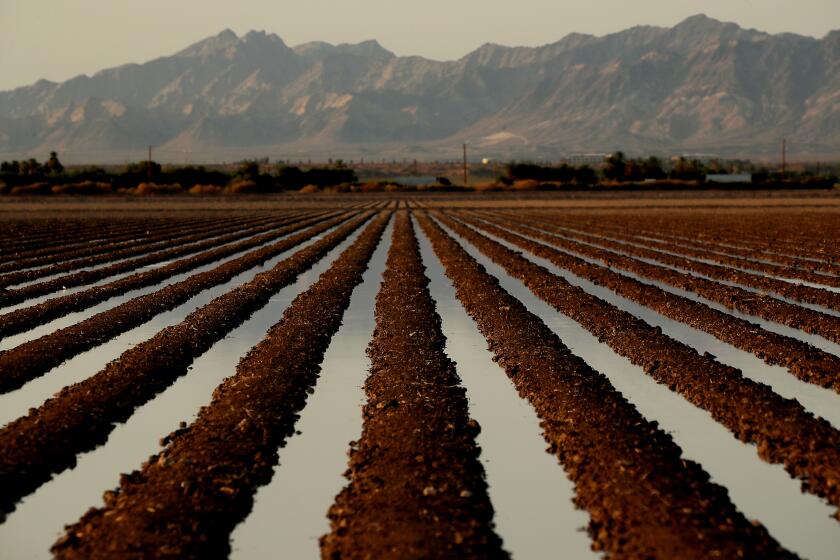Groups seek to ban large-scale animal farming in Sonoma County

Say “Sonoma County farm,” and most people will conjure an image of docile cows chewing cud or chickens scratching the dirt, idly whiling away their days among the grassy, green hills of this mostly rural, coastal Northern California county.
But animal rights activists say all is not right in this region known for its wine and farm-to-fork sensibilities. They say there are two dozen large, concentrated animal farming operations — which collectively house almost 3 million animals — befouling watersheds and torturing livestock and poultry in confined lots and cages.
And in an effort to stop it, they’ve collected more than 37,000 signatures from Sonoma County residents to put an end to it — forcing the county Board of Supervisors to either enact or match the ordinance themselves, or have it kicked over to the November ballot.
Aggressive and impactful reporting on climate change, the environment, health and science.
“For too long these operations have been banking on the image of small, humane, environmentally sound Sonoma County farms,” said Samantha Faye, spokeswoman for the Coalition to End Factory Farming — a collection of animal welfare advocates, environmentalists and small producers that is sponsoring the initiative.
But farm interests say there are no concentrated animal feeding operations in the county. And if the ballot initiative passes, it would threaten hundreds of family and multigenerational farms, while immediately shuttering about 60.
Much of the Colorado River’s water is used for agriculture. A new study shows 46% of the water that is diverted is used to grow hay to feed cattle.
Sponsors of the ordinance aim “to get rid of animal agriculture all together, everywhere,” insisted Dayna Ghirardelli, the president of the Sonoma County Farm Bureau. She said the organizers of the petition are animal “extremists” and are using this legislation as a means to start the process of wiping out farms. “This is just the beginning.”
Bill Mattos, president of the California Poultry Federation, agreed.
“This ballot initiative would eliminate family livestock farming that is so important in Sonoma County,” he said. “There will be no eggs, chicken, dairy, cheese, lamb and other livestock from Sonoma County in your supermarkets if this initiative passes.”
The ordinance, as written, would phase out medium- and large- sized concentrated agricultural feeding operations, also known as CAFOs. The ordinance defines these operations as any facility that includes animals stabled or confined for 45 days or more in a 12-month period. It also sets parameters for the number of animals permitted — which varies depending on the species — as well as how manure is discharged.

For example, a large CAFO is defined as an operation that includes more than 700 dairy cattle — and would be prohibited under the ordinance. So, too would a medium-sized CAFO — with more than 200 cattle — if it discharged animal waste into surface water. In the case of chickens, it would be illegal to house 125,000 chickens, or more than 37,500 if the facility discharged waste into surface water.
A “permitting authority” could also shut down a medium CAFO if it deemed the facility a “significant contributor of pollutants.”
The ordinance calls for a phaseout period of any prohibited farm, and requires that the county provide retraining and employment assistance for workers on affected farms.
California voters overwhelmingly approved two statewide ballots in 2008 and 2018 that addressed animal confinement, establishing minimum space requirements for a variety of livestock, including egg-laying hens, veal calves and pigs.
Faye said that across Sonoma County, there are thousands of farms with animals. Only two dozen would be considered large CAFOs under the ordinance. Collectively, those 24 hold almost 3 million animals.
Meanwhile, she said there were roughly 50 farms in the medium designation. “When put all together, those farms only have 435,000 animals. The difference there — that’s truly extreme.”
What is driving the unprecedented spread of avian flu?
Ghirardelli pushed back on that comparison.
“When they say two-point-something-million animals, you cannot equate a cow to a horse to a chicken. That’s why when we get into the science of animal husbandry, we talk about animal units,” she said, explaining that one animal unit is defined as 1,000 pounds of animal. “So it takes multiple chickens to come up with one animal unit. While for a dairy cow that weighs 1,400 pounds, that one cow can exceed one animal unit.”
Trying to compare an operation with hundreds of thousands of egg-laying chickens to a dairy farm with 40 animals just doesn’t make sense, she said.
Lewis Bernier, an animal rights activist supporting the initiative, said he has visited several factory farms across the country, documenting inhumane treatment, and one farm in Sonoma County stands out as having “the worst and most systemic animal cruelty that I’ve ever seen.”
He described birds that had lived their entire lives on wire floors, in crowded conditions, unable to right themselves after falls — because they’d never developed the muscles required to do so.
“It’s horrible,” he said. “And people in Sonoma County don’t want to be a part of this kind of thing.”
If the county’s board decides not to vote on the ordinance, it will be moved to county staff who will conduct an economic analysis and then the board will present the results at a public meeting. The board has until the end of April to make a decision.
Toward a more sustainable California
Get Boiling Point, our newsletter exploring climate change, energy and the environment, and become part of the conversation — and the solution.
You may occasionally receive promotional content from the Los Angeles Times.










